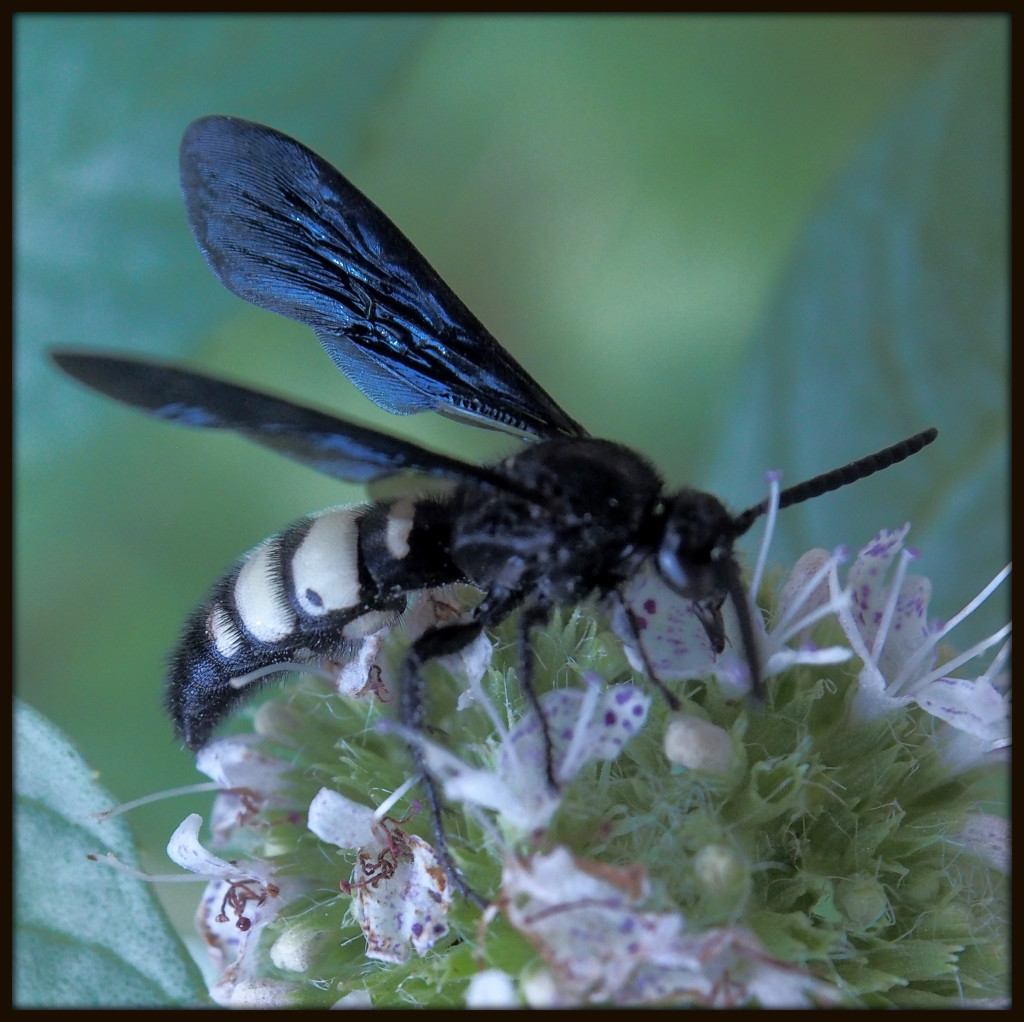It was another incredibly muggy, rather gray afternoon in the midst of the August dog days, and I languidly and drippingly made my way down Piney Woods Church Road. I was not expecting drama or excitement, but was hoping not to fall back on another image of a leaf illuminated by the Sun (assuming sufficient sunlight in the first place) or a second day photographing a caterpillar that looks like bird poop. I was delighted to find a black winged insect with a yellow-and-black striped body dashing about, pollinating a nondescript low shrub with clusters of small white flowers along the roadside. (The shrubby plant was later identified as Pycnanthemum incanum, Hoary Mountainmint or White Horsemint.) I enthusiastically took many photographs, settling on the three below as I fell short of “the perfect photo” of the creature. Having guessed a few weeks ago that an insect was a wasp only to find out it was, in fact, a hover fly (see “Party Time at the Cleyera” for that story), I naturally assumed it was a hover fly again. Someone at Facebook’s Bug Guide kindly set me right. This time, I had a pair of solitary wasps in my sights: Monobia quadridens, a species of potter’s wasp that feeds on a mixed diet of caterpillars and pollen (top photo); and Scolia bicincta, the Double-Banded Scoliid Wasp (bottom two photos, which feeds on nectar and lays its eggs on immobilized scarab beetle grubs.


